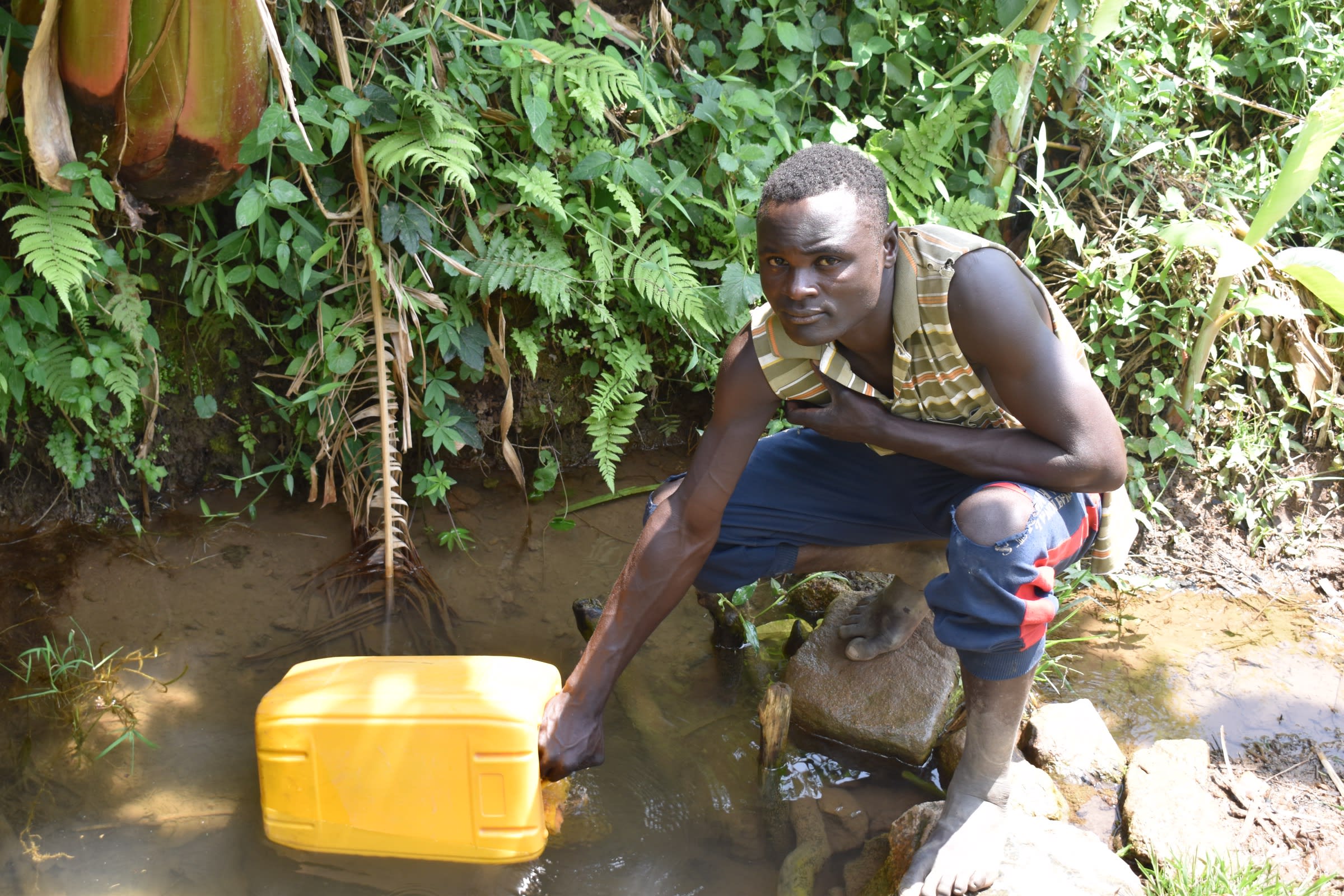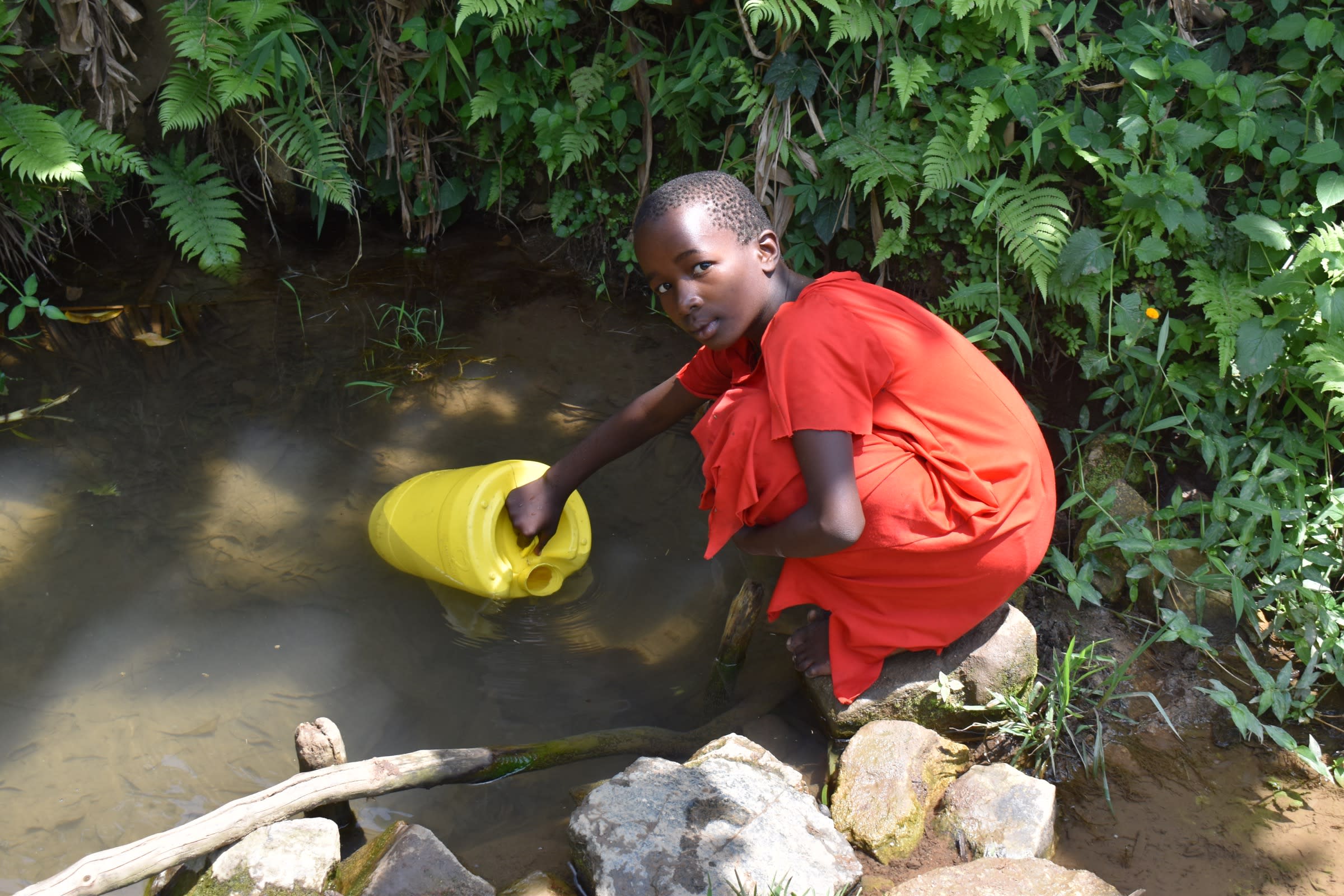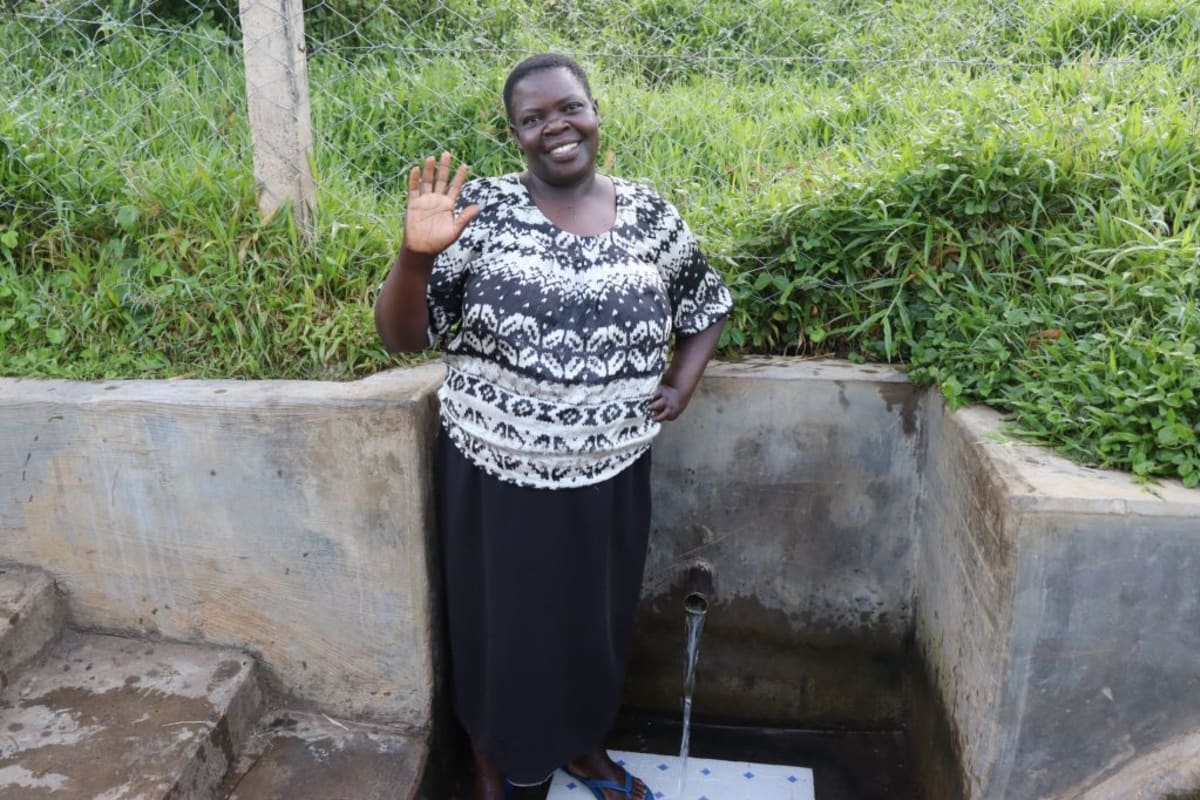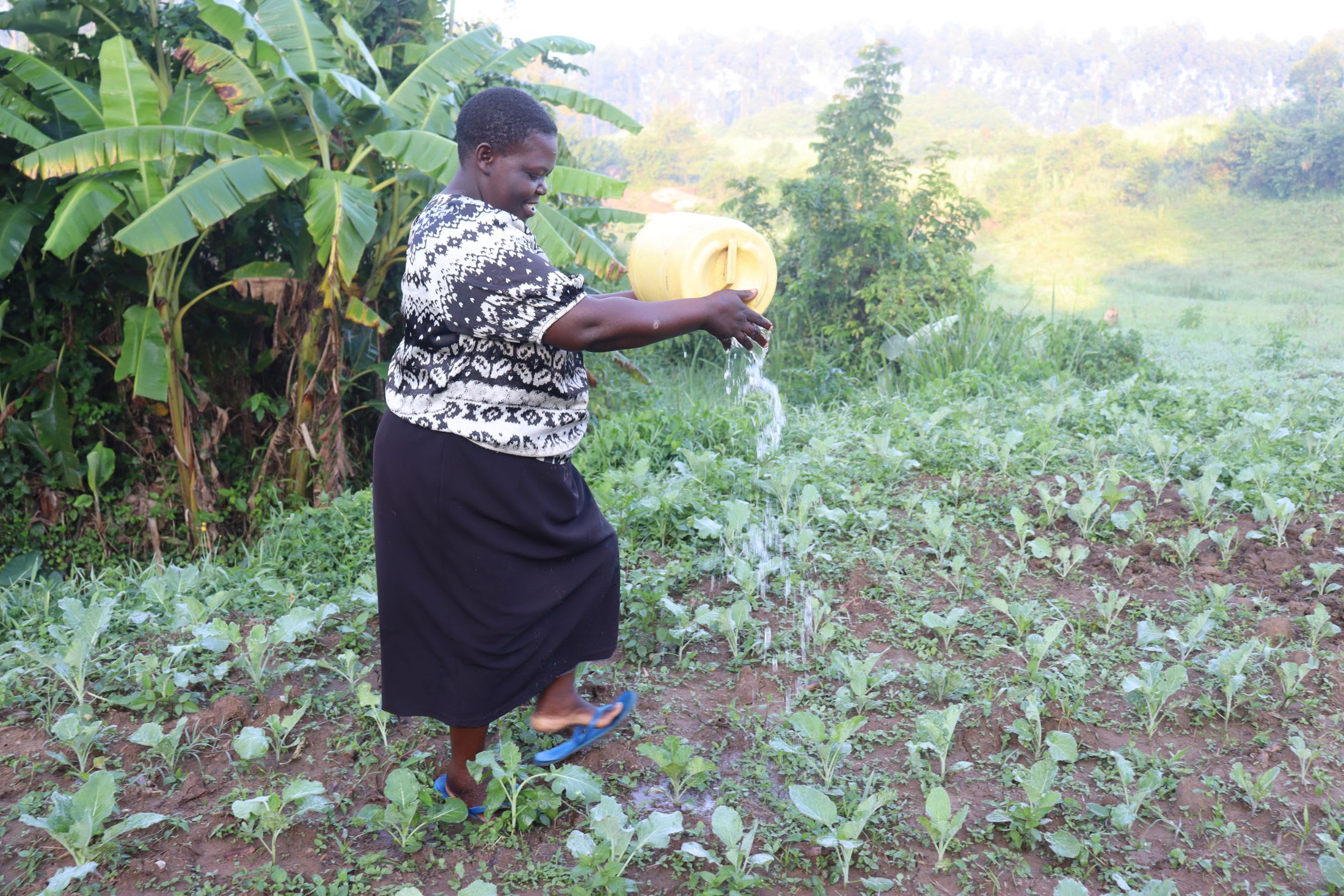Matekwa Spring is contaminated and difficult to access, and yet all 84 of Malimali's people use it as their only source of water. As Stephen Matekwa said, if he had any other choice, he would take it.
"Sometimes I wonder where else to get water from, especially after heavy rains," Stephen (in the photo below) said. He is a local farmer and is 22 years old. "The water gets so polluted due to runoff water."
The spring is surrounded by a banana plantation, whose fertilizer often leeches into the water.

It's during the rainy season that people report the highest instances of water-related illnesses, which include typhoid, cholera, and skin rashes, among others. The community members know their health issues are due to the unclean water they drink.
If contamination were the spring's only problem, that would be enough, but its rocky and slippery surroundings have injured many, especially children.

"I once slid and fell in the water source after I lost balance while trying to draw water," said nine-year-old Ann M. (in the picture above). "It's such a tough exercise drawing water from this place for me. The area gets slippery when it rains."
Local wildlife also uses the spring for bathing and drinking, and they find the area difficult to traverse, too. A number of times, community members have found drowned animals, particularly young chickens, in the water. But because there's nowhere else to get water, they are forced to scoop the animals out and fill their containers anyway.
Despite their unfortunate water situation, this community has warm-hearted people who are so welcoming and willing to share whatever little they have. During our visit, they shared with us some sugarcane and groundnuts from their farms. If they were granted a source of clean, safe water, they would be healthier, happier, and doubtless have more to share.
What We Can Do:
Spring Protection
Protecting the spring will help provide access to cleaner and safer water and reduce the time people have to spend to fetch it. Construction will keep surface runoff and other contaminants out of the water. With the community’s high involvement in the process, there should be a good sense of responsibility and ownership for the new clean water source.
Fetching water is a task predominantly carried out by women and young girls. Protecting the spring and offering training and support will, therefore, help empower the female members of the community by freeing up more of their time and energy to engage and invest in income-generating activities and their education.
Training on Health, Hygiene, COVID-19, and More
To hold trainings during the pandemic, we work closely with both community leaders and the local government to approve small groups to attend training. We ask community leaders to invite a select yet representative group of people to attend training who will then act as ambassadors to the rest of the community to share what they learn. We also communicate our expectations of physical distancing and wearing masks for all who choose to attend.
The training will focus on improved hygiene, health, and sanitation habits in this community. We will also have a dedicated session on COVID-19 symptoms, transmission routes, and prevention best practices.
With the community’s input, we will identify key leverage points where they can alter their practices at the personal, household, and community levels to affect change. This training will help to ensure participants have the knowledge they need about healthy practices and their importance to make the most of their water point as soon as water is flowing.
Our team of facilitators will use a variety of methods to train community members. Some of these methods include participatory hygiene and sanitation transformation, asset-based community development, group discussions, handouts, and demonstrations at the spring.
One of the most important issues we plan to cover is the handling, storage, and treatment of water. Having a clean water source will be extremely helpful, but it is useless if water gets contaminated by the time it is consumed. We and the community strongly believe that all of these components will work together to improve living standards here, which will help to unlock the potential for these community members to live better, healthier lives.
We will then conduct a small series of follow-up trainings before transitioning to our regularly scheduled support visits throughout the year.
Training will result in the formation of a water user committee, elected by their peers, that will oversee the operations and maintenance of the spring. The committee will enforce proper behavior around the spring and delegate tasks that will help preserve the site, such as building a fence and digging proper drainage channels. The fence will keep out destructive animals and unwanted waste, and the drainage will keep the area’s mosquito population at a minimum.

 Protected Spring
Protected Spring
 Rehabilitation Project
Rehabilitation Project









































